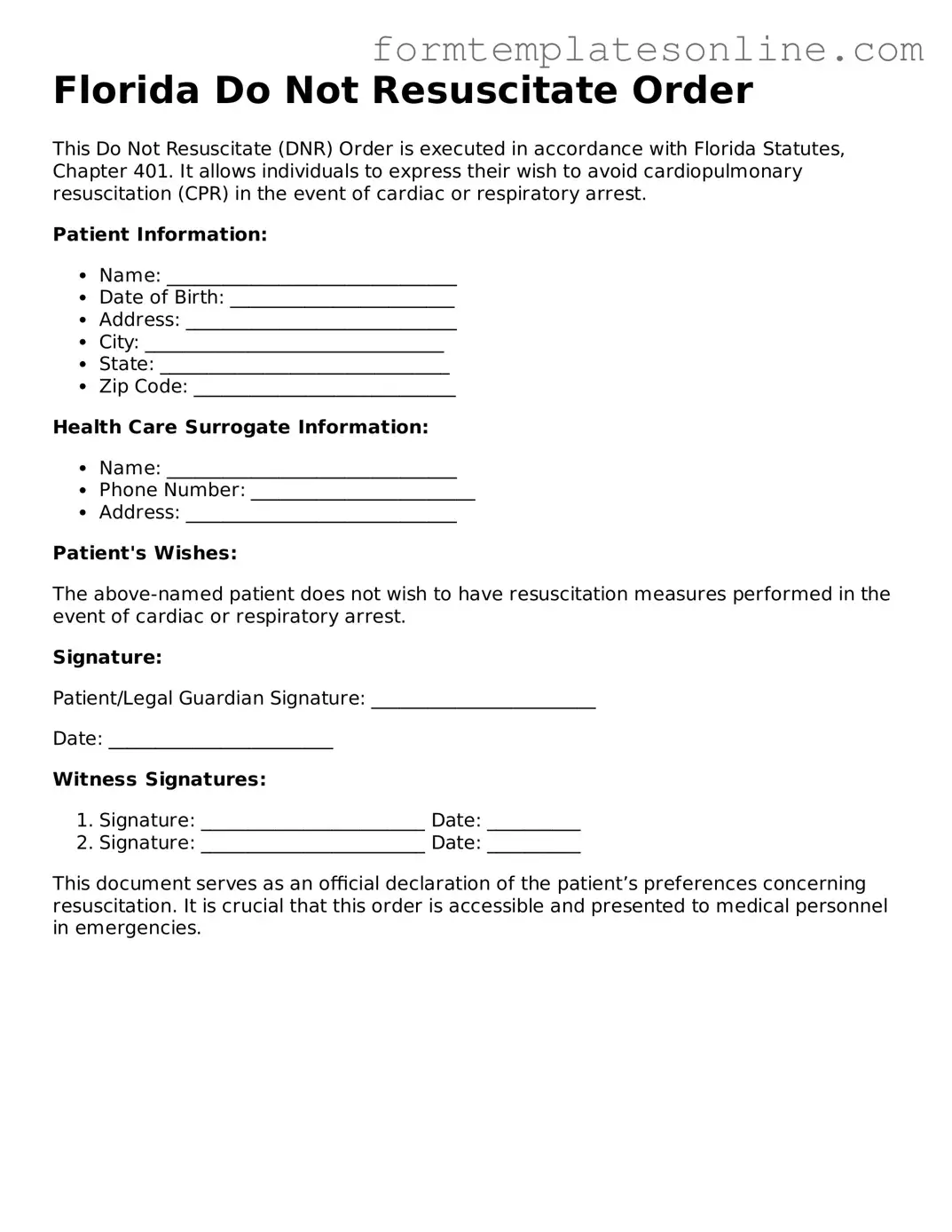What is a Florida Do Not Resuscitate Order (DNRO)?
A Florida Do Not Resuscitate Order is a legal document that allows a person to refuse resuscitation efforts in the event of a medical emergency. This order is typically used by individuals with terminal illnesses or severe medical conditions who wish to avoid aggressive life-saving measures, such as CPR, in the event of cardiac arrest or respiratory failure.
Who can complete a DNRO in Florida?
In Florida, a DNRO can be completed by an adult who is of sound mind. This includes individuals who are capable of making informed decisions about their medical care. Additionally, the order must be signed by a physician to be valid. The physician should discuss the implications of the order with the patient to ensure understanding.
How is a DNRO form obtained?
A DNRO form can be obtained from various sources, including hospitals, healthcare providers, or online from the Florida Department of Health website. It is important to ensure that the form is the official state version to meet legal requirements.
What information is required on the DNRO form?
The DNRO form requires specific information, including the patient’s name, date of birth, and the physician's signature. It may also include the patient's signature and a statement indicating the patient's wishes regarding resuscitation efforts. Accurate and clear information is essential for the form to be legally binding.
Where should the DNRO form be kept?
The DNRO form should be kept in a place that is easily accessible to healthcare providers. It is advisable to keep copies in the patient’s medical records, with family members, and in locations such as the refrigerator or on the front of the medical file. This ensures that the order can be quickly located in an emergency situation.
Can a DNRO be revoked or changed?
Yes, a DNRO can be revoked or changed at any time by the individual who created it. To revoke the order, the individual should destroy the original form and inform their healthcare providers of the change. A new DNRO can be completed if the individual wishes to create a different directive.
What happens if a DNRO is not available during a medical emergency?
If a DNRO is not available during a medical emergency, healthcare providers will typically proceed with standard resuscitation efforts. It is crucial for individuals to communicate their wishes clearly to family members and healthcare providers to avoid confusion in emergency situations.
Are there any legal protections for healthcare providers who follow a DNRO?
Yes, healthcare providers are legally protected when they follow the directives outlined in a valid DNRO. Following the order protects them from liability for not performing resuscitation efforts, provided the order is clearly documented and meets all legal requirements.
